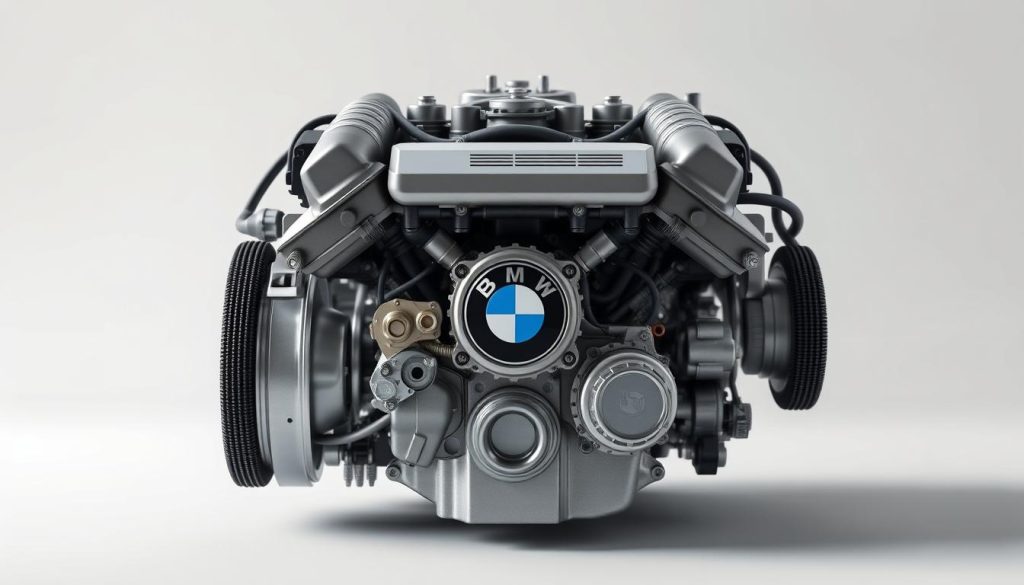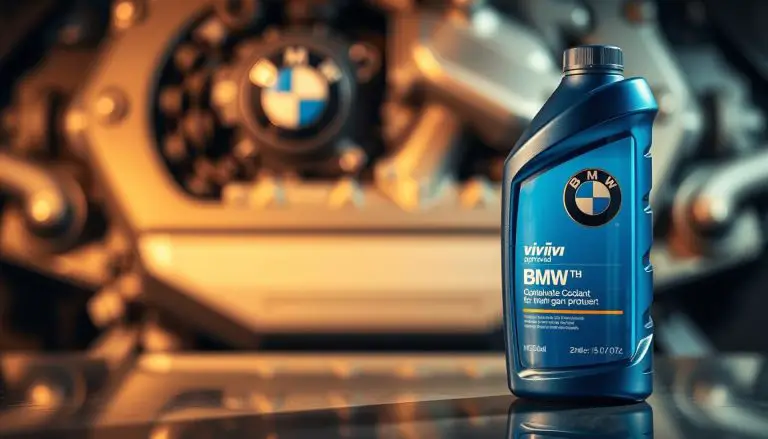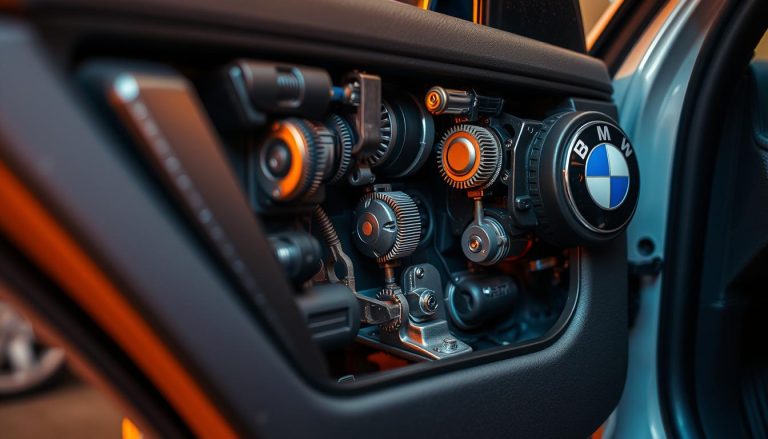The BMW M50 engine, a pinnacle of automotive engineering, has garnered significant acclaim among aficionados. Despite its prowess, it is not exempt from reliability issues. Grasping the M50 engine’s common problems is imperative for preserving its performance and prolonging its longevity.
Timely diagnosis and rectification of these maladies can avert further deterioration and expensive repairs. This discourse will explore the prevalent BMW M50 engine issues and offer insights into troubleshooting and resolution methodologies.
Key Takeaways
- Understanding the BMW M50 engine’s reliability issues is crucial for maintaining its performance.
- Diagnosing and fixing engine issues promptly can prevent further damage.
- The M50 engine’s common problems can be resolved with proper troubleshooting.
- Regular maintenance is key to extending the lifespan of the BMW M50 engine.
- Troubleshooting techniques can help identify and resolve engine issues.
Understanding the BMW M50 Engine
The BMW M50 engine marks a pivotal moment in the development of inline-six engines, enhancing the lineage of its predecessors with notable advancements.
M50 Engine Specifications and History
The BMW M50 engine, a 2.5-liter inline-six model, was manufactured from 1990 to 1996. It introduced the double-VANOS technology, a groundbreaking feature at the time, significantly boosting performance and efficiency. The engine was available in various forms, including the M50B25 and S50B30 for the European market.
| Engine Specification | Detail |
|---|---|
| Displacement | 2.5 liters |
| Cylinders | Inline 6 |
| Production Years | 1990-1996 |
Common BMW Models with M50 Engines
The M50 engine was featured in several BMW models, notably the E34 5 Series and the E36 3 Series. These vehicles benefited from the engine’s harmonious blend of performance and dependability.

General Reliability Overview
The M50 engine is generally considered reliable, with many examples achieving high mileage without significant problems. Yet, like any engine, it is susceptible to issues, often stemming from maintenance and wear.
BMW M50 Problems: Common Issues and Solutions
BMW M50 engine proprietors frequently encounter specific maladies that can be identified and rectified with the appropriate acumen.
Overview of Typical Failure Points
The BMW M50 engine harbors several components susceptible to failure over time. These include the cooling apparatus, timing chain, and VANOS system.
Adherence to regular maintenance is paramount in averting these issues from escalating into major malfunctions.

Age-Related vs. Design-Related Problems
Age-related maladies stem from wear and tear over time, manifesting as oil leaks and timing chain deterioration.
Conversely, design-related maladies are intrinsic to the engine’s design, encompassing issues such as cooling system failures.
Most Frequent Complaints from Owners
Owners frequently report grievances concerning oil consumption, cooling system failures, and timing chain malfunctions.
These grievances can be mitigated through diligent maintenance and timely interventions.
| Issue | Cause | Solution |
|---|---|---|
| Oil Consumption | Wear on piston rings or cylinder walls | Replace piston rings or cylinder head |
| Cooling System Failure | Leaks or faulty water pump | Repair leaks or replace water pump |
| Timing Chain Problems | Wear on timing chain or tensioner | Replace timing chain or tensioner |
Tools Needed for DIY Diagnosis and Repair
To diagnose and repair common BMW M50 maladies, proprietors will necessitate basic tools such as a multimeter, socket set, and diagnostic software.
Equipped with the requisite tools, the diagnosis and repair processes are significantly streamlined.
Cooling System Failures and Overheating
The BMW M50 engine, celebrated for its high performance, is susceptible to cooling system failures, which can precipitate overheating. The cooling system, a pivotal component, is indispensable in averting engine overheating, thus ensuring optimal performance and longevity.
Identifying Cooling System Problems
Early detection of cooling system malfunctions is imperative to avert engine damage. Indicators include an overheating engine, coolant leaks, and a temperature gauge that fluctuates. Regular inspections are instrumental in identifying issues before they escalate into major problems.
Water Pump and Thermostat Issues
The water pump and thermostat are critical to the cooling system’s functionality. A failing water pump can lead to engine overheating, while a malfunctioning thermostat hampers the engine from achieving its optimal operating temperature. Symptoms of failure encompass leaks, unusual noises, and erratic temperature readings.
Radiator and Hose Deterioration
Deterioration of the radiator and hoses can result in coolant leaks, compromising the system’s effectiveness. Inspecting hoses for cracks and the radiator for corrosion is essential to identify potential issues. Replacement of damaged components is crucial to maintain a functional cooling system.
Step-by-Step Cooling System Repair Guide
Repairing the cooling system necessitates several key steps. Initially, diagnose the issue to pinpoint the failing component. Common repairs include the replacement of the water pump and thermostat.
Replacing the Water Pump
Replacing the water pump entails draining the coolant, removing the old pump, and installing a new one. It is imperative to ensure all connections are secure to prevent leaks.
Thermostat Replacement Procedure
The procedure for replacing the thermostat involves locating the thermostat housing, removing the old thermostat, and installing a new one. It is crucial to bleed the cooling system to remove air pockets.
| Component | Symptoms of Failure | Repair Action |
|---|---|---|
| Water Pump | Leaks, Noise | Replace Pump |
| Thermostat | Erratic Temperature | Replace Thermostat |
| Radiator | Coolant Leaks, Corrosion | Replace Radiator |
By adhering to these steps and maintaining the cooling system, BMW M50 owners can prevent overheating issues and ensure their engine operates smoothly.
Oil Leaks and Consumption Issues
The BMW M50 engine is frequently plagued by oil leakage, a condition that necessitates immediate attention to prevent further complications. Such leaks not only deplete the engine’s lubricant but also compromise its performance, elevate emissions, and potentially harm other critical components.
Common Oil Leak Locations
Within the BMW M50 engine, several locales are prone to oil leaks. Identifying these areas is imperative for timely detection and rectification.
- Valve Cover Gasket
- Oil Pan Gasket
- Oil Filter Housing
Valve Cover Gasket Problems
The valve cover gasket is a frequent culprit behind oil leaks in the BMW M50 engine. Its deterioration over time results in oil seepage.
“Replacing the valve cover gasket is a relatively straightforward process that can be done at home with the right tools and a bit of patience.” – BMW enthusiast
Valve Cover Gasket Replacement
To replace the valve cover gasket, initiate by removing the valve cover. Thoroughly clean the area before installing a new gasket. It is crucial to ensure all bolts are tightened to the specified torque.
Oil Pan and Oil Filter Housing Leaks
Leaks from the oil pan and oil filter housing are also prevalent. These leaks, though more elusive to diagnose, are equally critical to address.
| Leak Location | Symptoms | Repair Difficulty |
|---|---|---|
| Oil Pan | Oil drips on the ground, low oil level | Moderate |
| Oil Filter Housing | Oil leaks around the filter, oil spots | Easy to Moderate |
Oil Pan Gasket Repair
Addressing an oil pan gasket leak entails removing the oil pan, cleaning the area, and installing a new gasket. It is vital to adhere to the correct torque sequence when reinstalling the oil pan bolts.
Engaging in DIY repair for oil leaks in the BMW M50 engine can significantly reduce repair costs. Yet, it is paramount to adhere to proper repair methodologies and employ high-quality replacement components to guarantee the engine’s longevity.
Timing Chain and VANOS System Troubles
The BMW M50 engine’s complexity reveals potential issues with the timing chain and VANOS system. These components are vital for the engine’s performance. Their failure can lead to significant problems.
Symptoms of Timing Chain Wear
The timing chain in the BMW M50 engine is prone to wear and stretch over time, leading to potential engine performance issues. Symptoms include rattling noises on startup, poor engine performance, and in severe cases, engine misfires.
Regular inspection is crucial to identify timing chain wear before it causes major damage. Owners should listen for unusual noises and monitor engine performance.
VANOS System Failures and Diagnosis
The VANOS system, responsible for variable valve timing, can also experience failures. Common symptoms include rough idling, decreased power output, and the illumination of the check engine light.
Diagnosing VANOS system failures involves checking for error codes with a diagnostic tool and inspecting the system’s components for wear or damage.
Step-by-Step Repair Guide
Timing Chain Replacement
Replacing the timing chain involves several steps, including removing the valve cover, timing cover, and tensioner. It’s a complex process that requires mechanical aptitude and the right tools.
- Remove the valve cover and timing cover.
- Release the tensioner and remove the old timing chain.
- Install the new timing chain, ensuring proper alignment.
VANOS Seal Replacement
VANOS seal replacement is another common repair. It involves removing the VANOS unit, replacing the seals, and reinstalling the unit.
- Remove the VANOS unit from the engine.
- Carefully replace the seals, ensuring no damage to the unit.
- Reinstall the VANOS unit, checking for leaks.
Cost Comparison: DIY vs. Professional Repair
While DIY repairs can save money, they require time and mechanical skill. Professional repairs offer convenience and warranty but at a higher cost.
| Repair Type | DIY Cost | Professional Cost |
|---|---|---|
| Timing Chain Replacement | $500-$700 (parts) | $1,500-$2,500 |
| VANOS Seal Replacement | $200-$300 (parts) | $800-$1,200 |
BMW M50 owners should weigh the costs and their own capabilities when deciding between DIY and professional repairs for timing chain and VANOS system troubles.
Fuel System and Injector Problems
The intricacies of the BMW M50’s fuel system are paramount for the identification and rectification of prevalent injector and pump malfunctions. The engine’s operational efficacy hinges on the fuel system’s integrity, with any aberration potentially precipitating a decline in performance and, in extreme cases, irreparable damage.
Fuel Pump Failure Symptoms
The fuel pump, an indispensable element within the fuel system, exhibits critical failure symptoms. These include:
- Engine stuttering or hesitation
- Difficulty starting the engine
- Loss of power while driving
These indicators suggest a malfunctioning fuel pump, necessitating its replacement.
Injector Issues and Diagnosis
Malfunctions in fuel injectors, such as clogging or failure, can severely impair engine performance. The diagnostic process entails:
- Inspecting for fuel leakage signs
- Monitoring engine performance for anomalies
- Utilizing diagnostic tools to assess injector functionality
Fuel Pressure Regulator Problems
The fuel pressure regulator is pivotal in maintaining the fuel system’s optimal pressure. Its malfunction can manifest as:
- Poor engine performance
- Fuel leaks
- Decreased fuel efficiency
Diagnosing issues with the fuel pressure regulator necessitates symptom observation and regulator functionality testing.
DIY Fuel System Repair Procedures
DIY fuel system repair encompasses various procedures, including:
Injector Cleaning and Testing
Cleaning fuel injectors necessitates the application of specialized cleaning agents to eradicate debris and deposits. Subsequent testing evaluates the injectors’ spray pattern and flow rate.
Fuel Pump Replacement Guide
Replacing the fuel pump demands meticulous steps, encompassing fuel line disconnection, removal of the old pump, and installation of a new unit. Adherence to safety protocols is imperative to prevent fuel spills and electrical hazards.
By comprehending and addressing fuel system malfunctions, BMW M50 proprietors can ensure the vehicle’s continued performance and longevity.
Electrical and Sensor Malfunctions
BMW M50 engine owners frequently encounter electrical system failures and sensor malfunctions. These problems can significantly impair engine performance, diminish fuel efficiency, and even prevent engine start-up. It is imperative to comprehend the typical causes and to possess the knowledge for diagnosing and rectifying these issues to preserve the vehicle’s integrity.
Common Sensor Failures
The BMW M50 engine’s operational efficiency hinges on the functionality of various sensors. Predominant sensor malfunctions encompass issues with the Mass Airflow (MAF) sensor, oxygen sensors, and coolant temperature sensors. Such failures manifest as rough idling, diminished power output, and suboptimal fuel economy.
Wiring Harness Issues
Wiring harness malfunctions are a prevalent electrical concern in BMW M50 engines. Over time, the wiring can deteriorate, resulting in shorts, corrosion, and connectivity problems. These issues can provoke erratic sensor readings, faulty gauges, and even hinder engine start-up.
Using Diagnostic Tools for Troubleshooting
Modern diagnostic tools are indispensable for pinpointing electrical and sensor malfunctions. Utilizing tools such as the BMW DIS (Diagnostic and Information System) or third-party OBD-II scanners facilitates issue identification. These tools enable the reading of fault codes, monitoring of sensor data, and performance of actuator tests.
Step-by-Step Repair Procedures
Addressing electrical and sensor malfunctions necessitates a methodical approach. For instance, the cleaning or replacement of a faulty MAF sensor can rectify engine performance issues. Diagnosing and replacing a malfunctioning oxygen sensor can enhance fuel efficiency and decrease emissions.
MAF Sensor Cleaning and Replacement
To clean the MAF sensor, employ a specialized cleaner and adhere to the manufacturer’s guidelines. If cleaning proves ineffective, replacement may be required. For comprehensive instructions, consult your vehicle’s repair manual or a reputable automotive resource like Automotive Simple.
Oxygen Sensor Diagnosis and Repair
Diagnosing an oxygen sensor malfunction entails monitoring the sensor’s voltage output via a scan tool. If the sensor is defective, it may necessitate replacement. It is crucial to follow proper safety protocols and seek professional assistance if uncertain.
| Sensor Issue | Symptoms | Repair Action |
|---|---|---|
| MAF Sensor Failure | Rough idling, decreased power | Clean or replace MAF sensor |
| Oxygen Sensor Failure | Poor fuel economy, increased emissions | Replace oxygen sensor |
| Wiring Harness Issues | Erratic sensor readings, faulty gauges | Inspect and repair wiring harness |
Intake and Vacuum Leak Diagnosis
For BMW M50 proprietors, the imperative task of identifying and rectifying intake and vacuum leaks is paramount to avert engine deterioration. Such leaks precipitate a cascade of maladies, encompassing diminished engine efficacy, erratic idling, and augmented emissions. This discourse aims to elucidate the symptoms indicative of vacuum leaks, the methodologies for diagnosing intake manifold anomalies, and the efficacious repair strategies.
Symptoms of Vacuum Leaks
Vacuum leaks within the BMW M50 manifest through a plethora of symptoms, including rough idling, decreased fuel efficiency, and unusual hissing sounds emanating from the engine compartment. Early detection of these indicators is crucial to forestall more egregious damage.
Finding and Fixing Intake Manifold Issues
The intake manifold is a frequent locale for leaks to occur. Diagnosing problems necessitates an examination of the manifold gasket for signs of deterioration or damage. The rectification often entails the replacement of the gasket or the tightening of loose connections.
PCV System Problems
The Positive Crankcase Ventilation (PCV) system is susceptible to malfunctions that can induce vacuum leaks. Obstructions within the PCV valves or hoses can engender increased pressure within the engine, culminating in leaks and additional complications.
DIY Diagnostic Methods
Several DIY approaches exist for diagnosing vacuum leaks, including:
- Smoke testing
- Pressure testing the intake system
- Listening for hissing sounds
Smoke Testing Procedure
Smoke testing entails the introduction of smoke into the intake system to visually delineate leaks. This technique is remarkably effective in identifying the exact source of vacuum leaks.
Pressure Testing the Intake System
Pressure testing involves the pressurization of the intake system to detect leaks. Utilization of a pressure tester kit, designed for this specific purpose, facilitates this process.
| Diagnostic Method | Effectiveness | Cost |
|---|---|---|
| Smoke Testing | High | Moderate |
| Pressure Testing | High | Low |
| Listening for Hissing Sounds | Moderate | Low |
Performance Issues and Troubleshooting
When your BMW M50 exhibits performance anomalies, it is imperative to identify the root cause with precision to revive its potency and efficiency. These anomalies can manifest in several forms, such as a diminution in power, irregular idling, or a hesitation during acceleration.
Loss of Power Diagnosis
The diminution in power can stem from a multitude of factors. Initiate by examining the air filter and mass airflow sensor for any obstructions or malfunctions. A defective oxygen sensor can also precipitate a decline in performance. Employ a diagnostic tool to scan for any trouble codes that may elucidate the source of the problem.
Rough Idle and Hesitation Problems
Rough idling or hesitation during acceleration can be attributed to various issues, including faulty spark plugs, a clogged fuel filter, or ignition system malfunctions. Inspect the spark plugs and replace them if necessary. Ensure the fuel filter is pristine and contemplate the use of a fuel system cleaner to preserve optimal fuel flow.
Exhaust System Issues
Leaks or blockages in the exhaust system can also contribute to performance anomalies. Inspect the exhaust system for any signs of damage or leaks. Examine the catalytic converter for any blockages, as a clogged converter can significantly impede engine performance.
Performance Restoration Procedures
Restoring your BMW M50’s performance necessitates a series of maintenance and repair tasks. Two pivotal areas to concentrate on are throttle body cleaning and ignition system maintenance.
Throttle Body Cleaning
The throttle body can accumulate grime over time, impacting engine performance. Cleaning the throttle body entails its removal and application of a throttle body cleaner to eradicate any grime or deposits. This procedure can enhance throttle response and overall engine performance.
Ignition System Maintenance
Maintaining the ignition system is essential for optimal engine performance. This encompasses the inspection and replacement of spark plugs, spark plug wires, and the ignition coil as required. For more detailed guidance on ignition system maintenance, refer to resources such as this forum discussion.
By adhering to these steps and conducting regular maintenance, you can restore your BMW M50’s performance and relish a more refined driving experience.
Conclusion: Maintaining Your BMW M50 for Longevity
Ensuring the longevity of the BMW M50 engine necessitates a commitment to regular maintenance. This entails diligent checks on the cooling system, oil levels, and timing chain. Proactive addressing of common issues can avert major repairs, thus ensuring the vehicle’s smooth operation.
Essential maintenance tasks include verifying the coolant level, inspecting the water pump, and replacing the valve cover gasket when necessary. Vigilance in monitoring oil consumption and immediate response to any leaks are critical to prevent engine damage. The condition of the timing chain and VANOS system must be meticulously maintained for optimal engine performance.
Adherence to these maintenance guidelines and prompt attention to repairs will allow BMW M50 owners to relish their vehicles for extended periods. Adequate care and vigilance towards potential issues can substantially prolong the engine’s lifespan, ensuring a reliable and pleasurable driving experience.
FAQ
What are the most common problems with the BMW M50 engine?
The BMW M50 engine frequently encounters malfunctions such as cooling system failures, oil leaks, and wear on the timing chain. VANOS system failures are also prevalent, contributing to a range of issues.
How do I diagnose cooling system problems in my BMW M50?
Diagnosing cooling system malfunctions involves observing signs of leaks, verifying coolant levels, and inspecting the water pump and thermostat. Radiator and hose deterioration should also be assessed.
What are the symptoms of a failing VANOS system?
Indicators of VANOS system failure include a rough idle, hesitation, and diminished power output. Error codes specific to the VANOS system may also appear.
Can I repair oil leaks on my BMW M50 myself?
Yes, many oil leaks can be addressed through DIY efforts. This includes repairing valve cover gasket and oil pan gasket leaks, provided the correct procedures are followed.
How do I diagnose and fix intake and vacuum leaks?
Diagnosing intake and vacuum leaks involves employing methods like smoke testing and pressure testing the intake system. The PCV system should also be inspected for any problems.
What are the common causes of performance issues in the BMW M50?
Performance issues, such as loss of power, rough idle, and hesitation, often stem from faulty sensors, ignition system malfunctions, and exhaust system problems.
How do I maintain my BMW M50 engine for longevity?
To ensure the longevity of the BMW M50 engine, regular maintenance is crucial. This includes routine oil changes, thorough inspections, and prompt resolution of any issues that arise.
What tools are needed for DIY diagnosis and repair of BMW M50 problems?
Essential tools for DIY diagnosis and repair include diagnostic equipment, such as code readers and multimeters, alongside standard mechanic’s tools like wrenches and socket sets.
Are DIY repairs cost-effective compared to professional repairs?
DIY repairs can offer cost savings for many issues, contingent upon the repair’s complexity and the individual’s expertise level.
How do I diagnose fuel system problems in my BMW M50?
Diagnosing fuel system problems involves identifying symptoms such as fuel pump failure, injector malfunctions, and issues with the fuel pressure regulator. Utilizing diagnostic tools is crucial for thorough testing.


